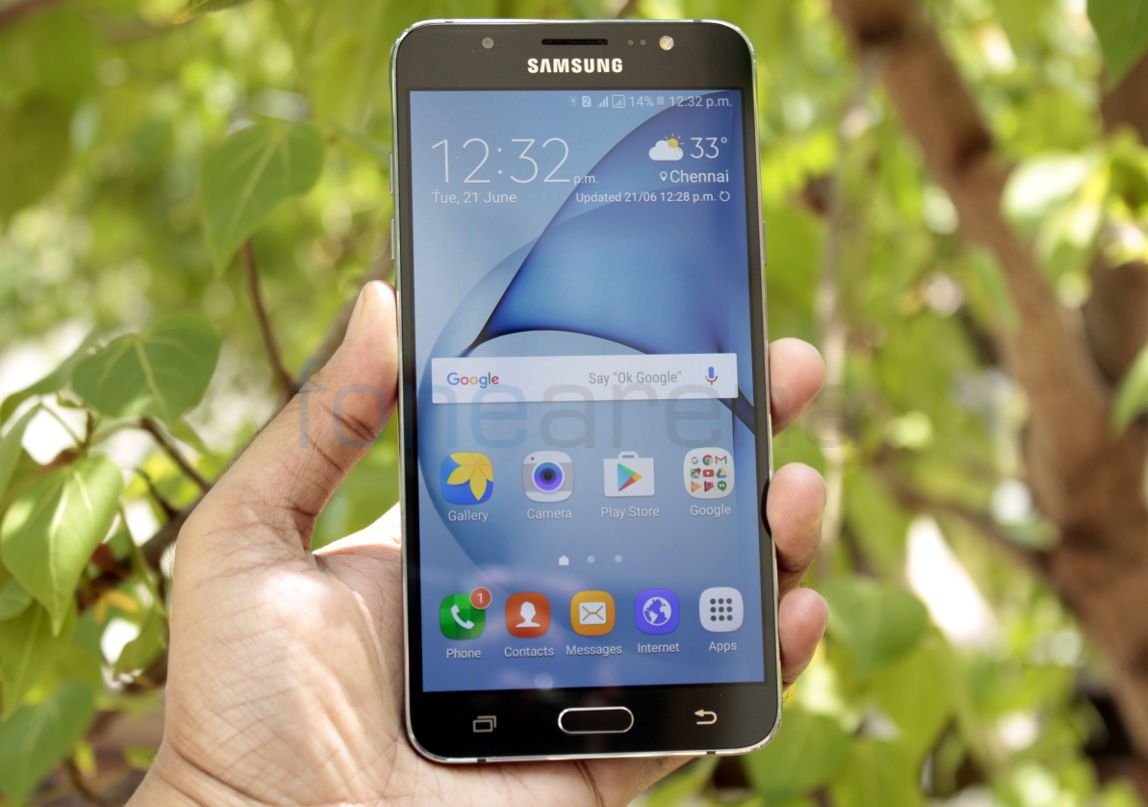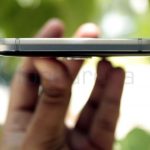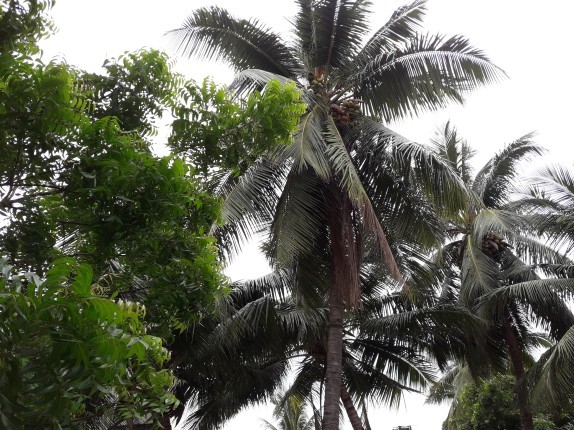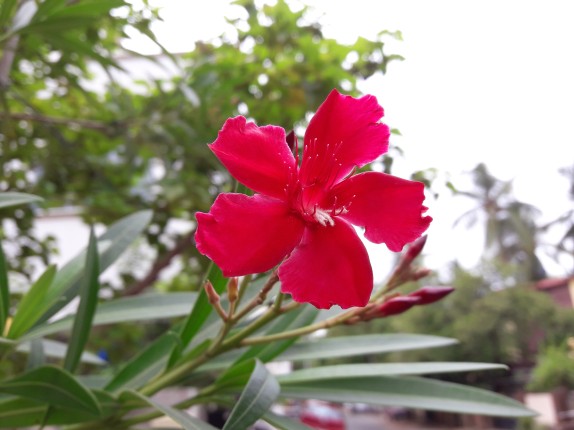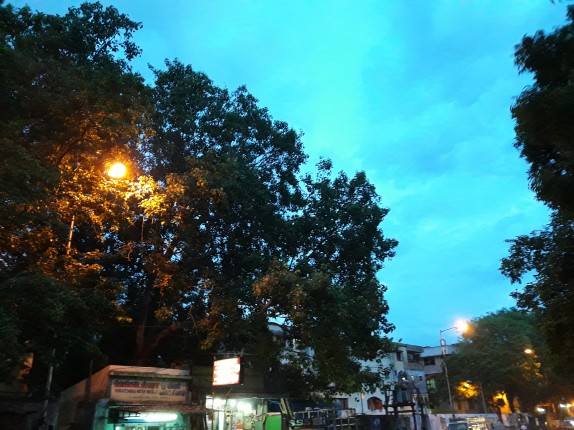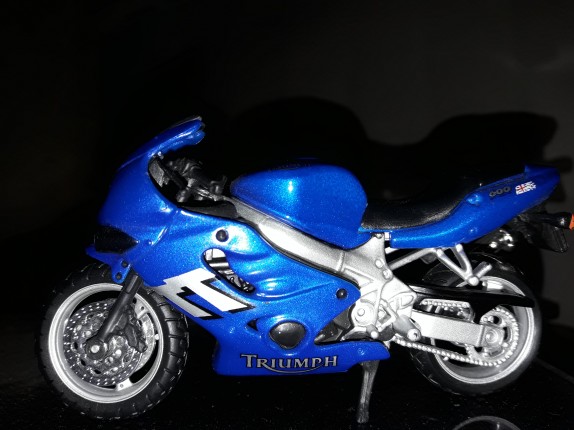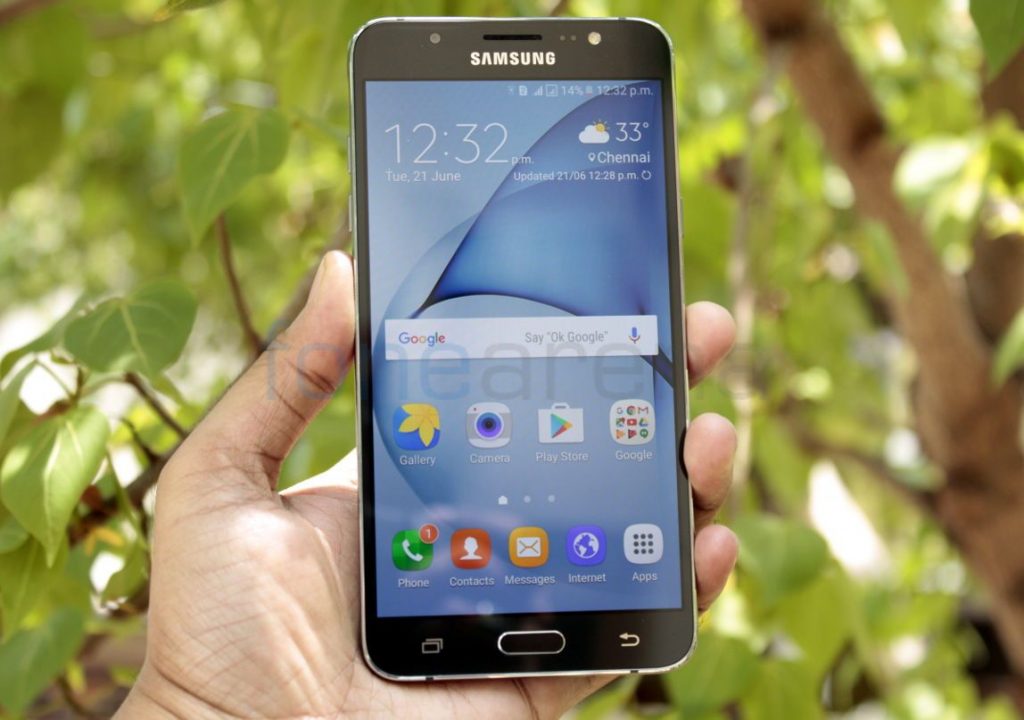
Samsung launched the Galaxy J7 (2016) smartphone in the new J series last month. Even though it retains the same 5.5-inch HD Super AMOLED screen, it has a faster processor, more RAM and a slightly bigger battery. Is the phone worth the price? Let us find out in the complete review.
Unboxing
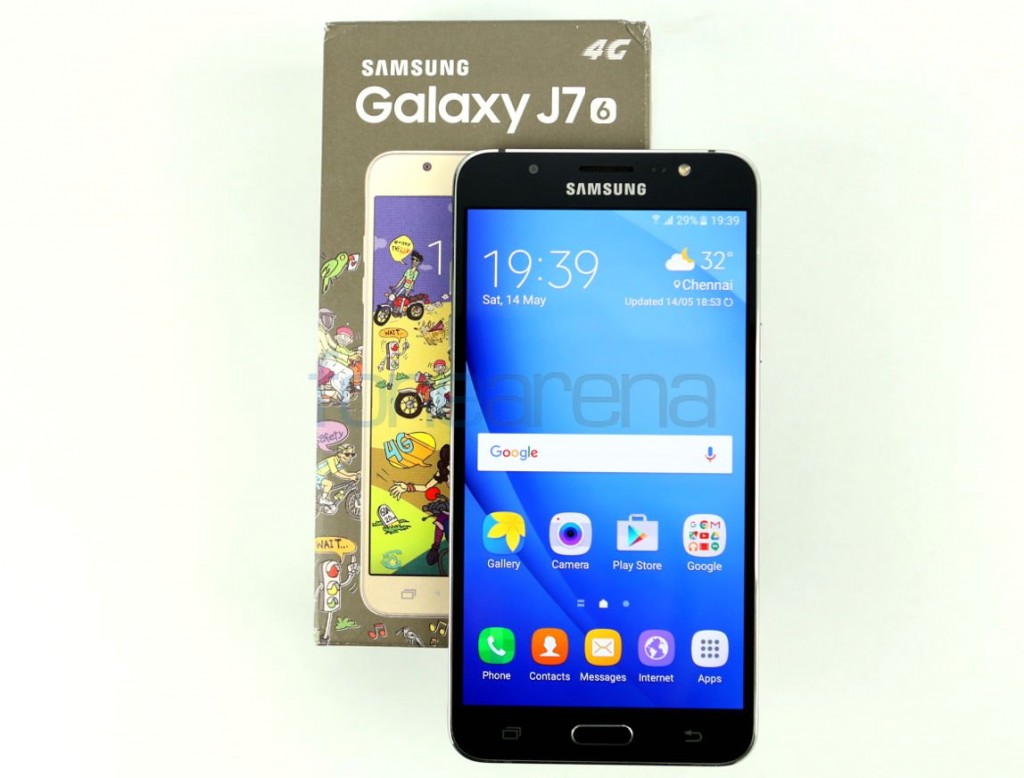
We unboxed the new Galaxy J7 smartphone recently, check out the video below.
Box Contents
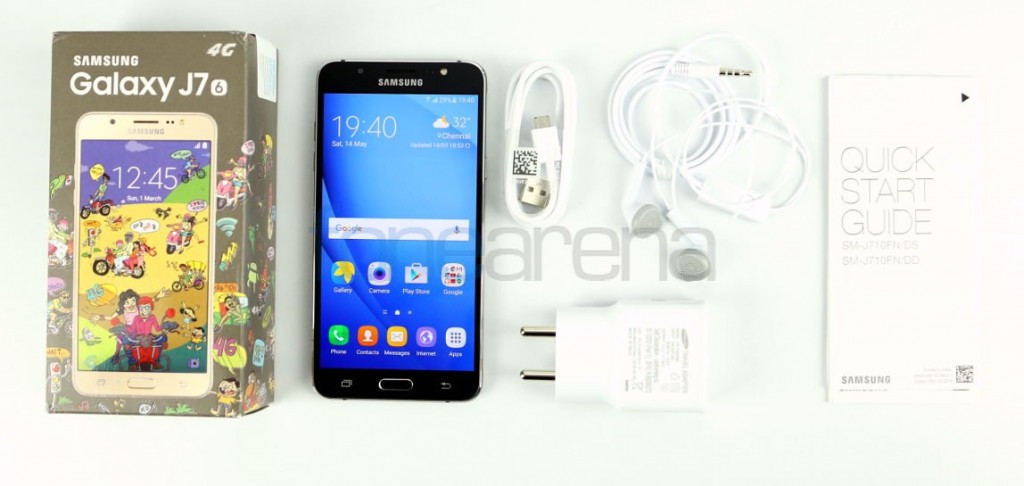
- Samsung Galaxy J7 (2016) smartphone in Black color
- 2-pin charger (5V-1.55A)
- Micro USB cable
- Earphones with microphone
- 3300mAh battery
- Quick start guide and warranty information
Display, Hardware and Design
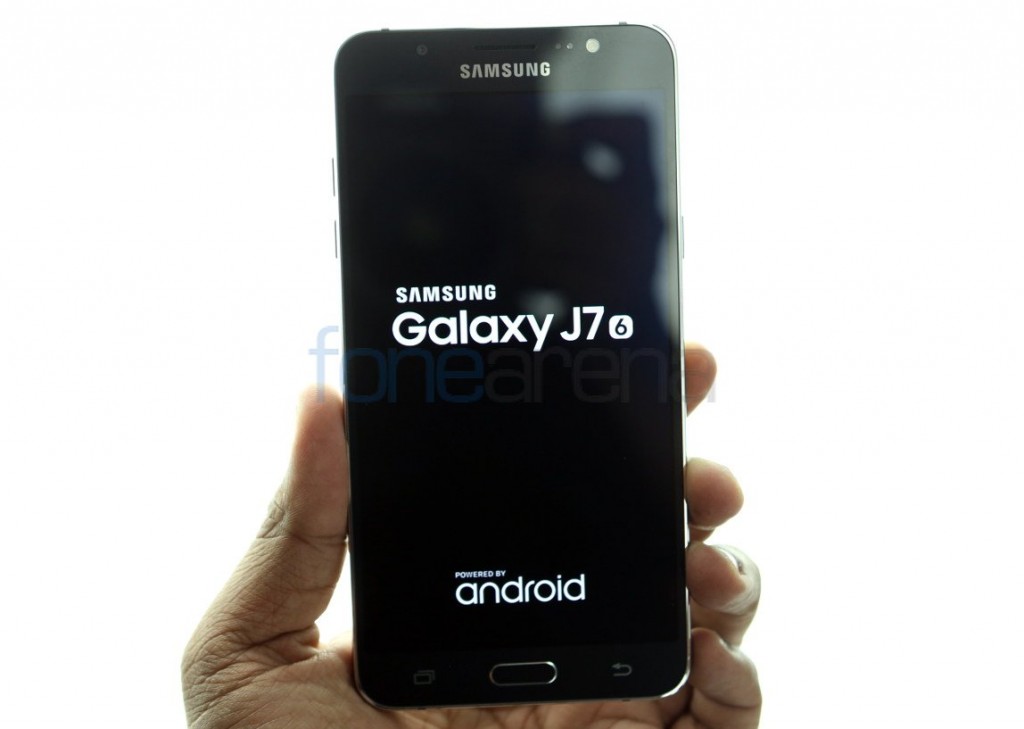
There is no major design change in the latest Galaxy J7 compared to the previous version. It also retains the same 5.5-inch Super AMOLED display with a pixel resolution of 1280 x 720 pixels and a pixel density of around 267 PPI, even though the Chinese version comes with a 1080p screen. Blacks are perfectly black, thanks to the AMOLED panel. The display is decent with good viewing angles and offers vibrant color output, but the sunlight visibility is not the best since the screen is not clearly visible under direct sunlight even if the brightness is full.
Since it doesn’t have an ambient light sensor you have to adjust the brightness manually using the slider depending on the conditions. There is an outdoor mode option that increases the brightness for 15 minutes or until the screen is turned off.
Samsung doesn’t say if the smartphone has Corning Gorilla Glass or any other scratch-resistant glass for protection. The display is prone to smudges since it is bit glossy.
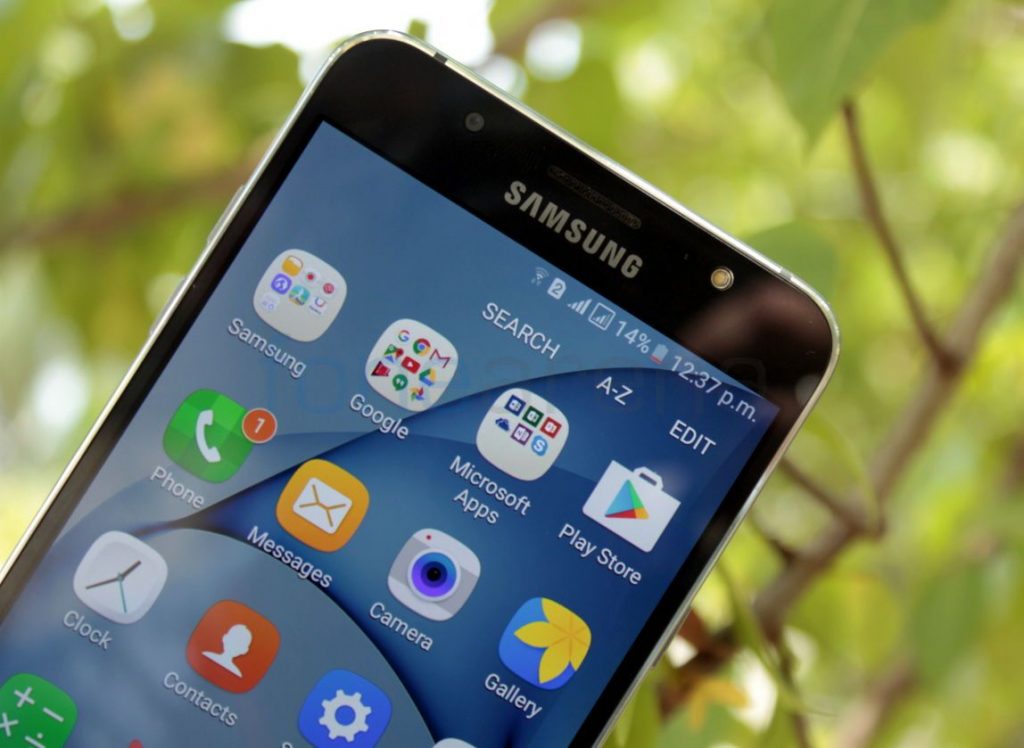
On the top there is a 5-megapixel camera with f/1.9 aperture along with LED flash light for capturing better selfies in low lighting conditions. Flash light helps to capture a subject clearly in poor lighting conditions and is not too bright. It has a proximity sensor next to the earpiece, but the smartphone lacks an ambient light sensor, even though there is a cutout for it. It also lacks notification LED, gyroscope and a magnetometer or magnetic sensor. Most phones in the price range have most of the sensors.
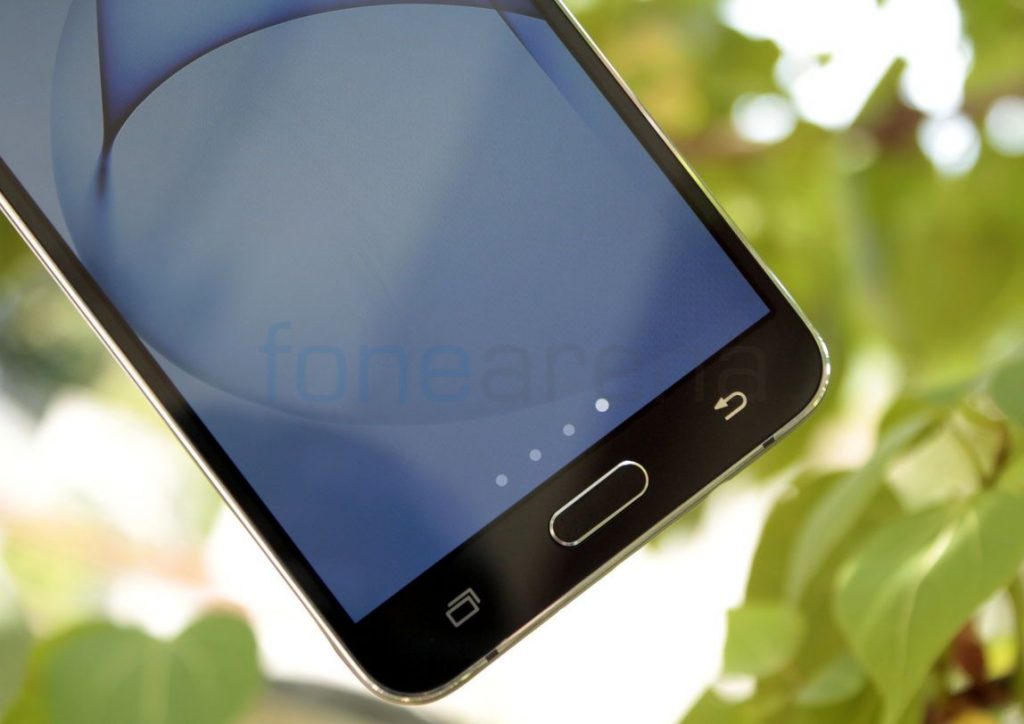
There is Samsung’s signature home button below the display that has a chrome finish around it. The capacitive touch buttons are present on both the sides. These are not backlit, neither offer haptic feedback when pressed.
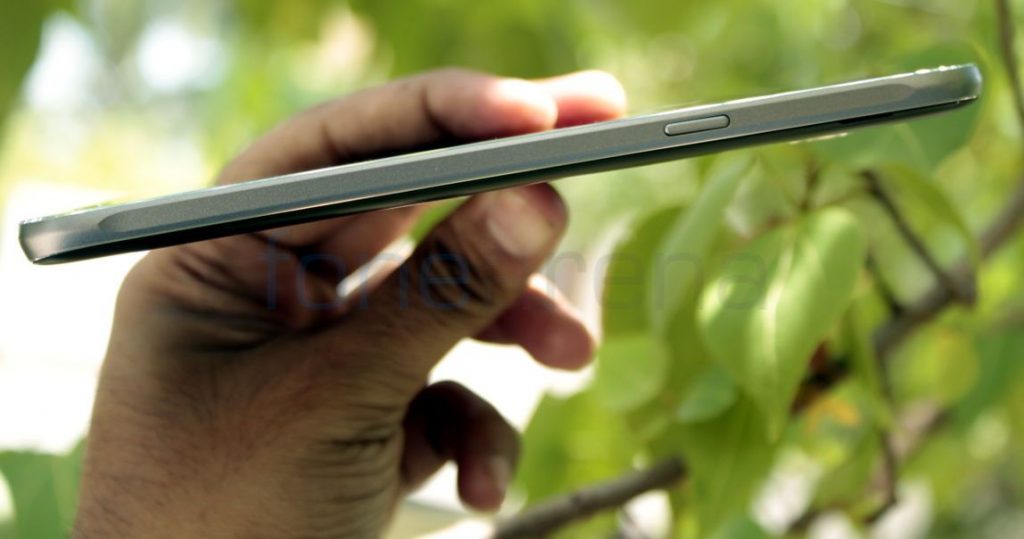
Unlike the last year’s Galaxy J7 that had a glossy frame, this year’s J7 smartphone has a brushed metal frame, which is slightly thicker at 7.8mm.
The power button is present on the right side and the volume rockers are present on left. The primary microphone, micro USB port and the 3.5mm audio jack are present on the bottom. There is nothing on the top, but you can see the antenna lines running on the top and the bottom.
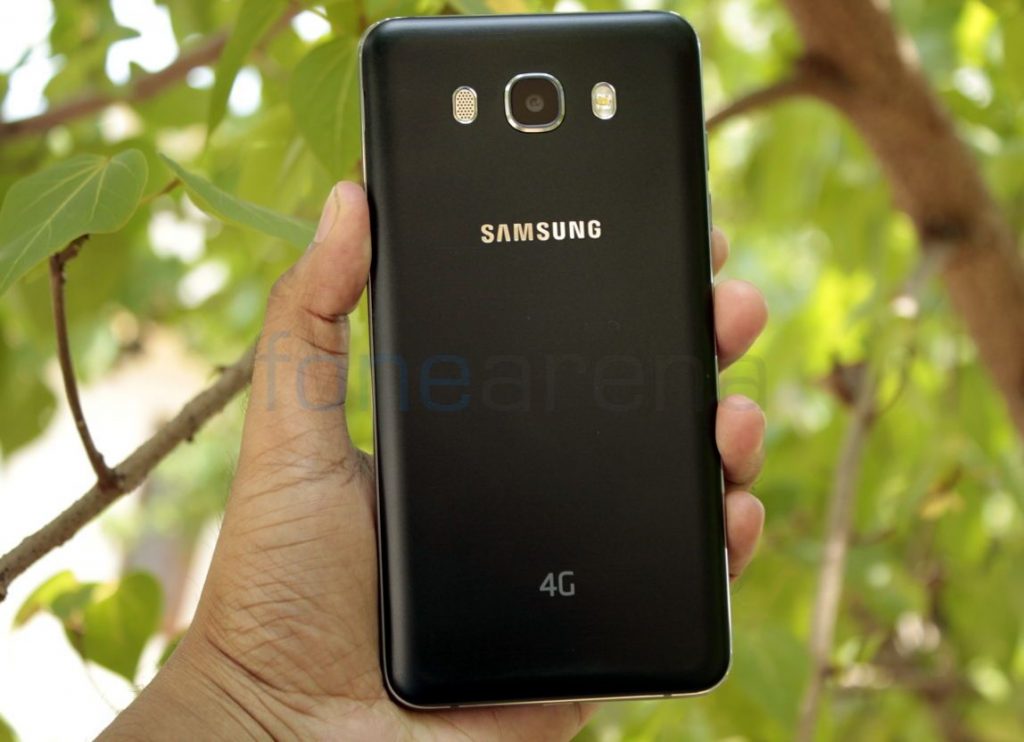
Even though the phone has a plastic back cover, it has a solid built quality and is easy to grip. It is 76mm wide and 151.7 mm tall, making it smaller than the first generation Galaxy J7, but it is 171 grams, almost same as the J7. There is a 13-megapixel camera on the back with single LED flash. The loudspeaker grill is present next to it. The 4G branding is present on the bottom part of the back.
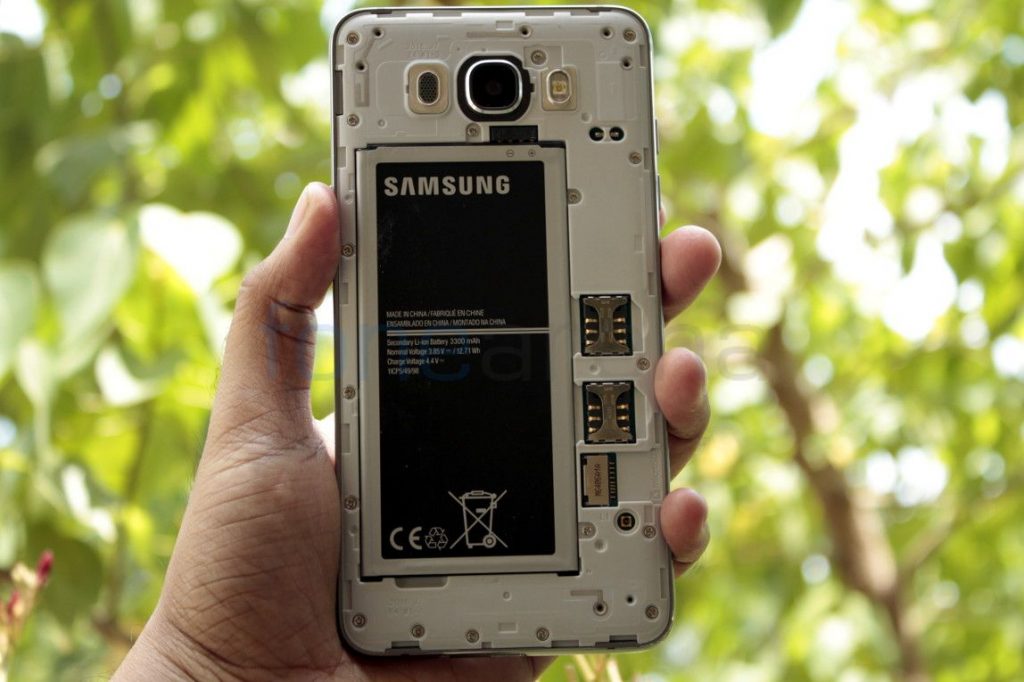
Opening the back cover reveals the huge 3300mAh removable battery.
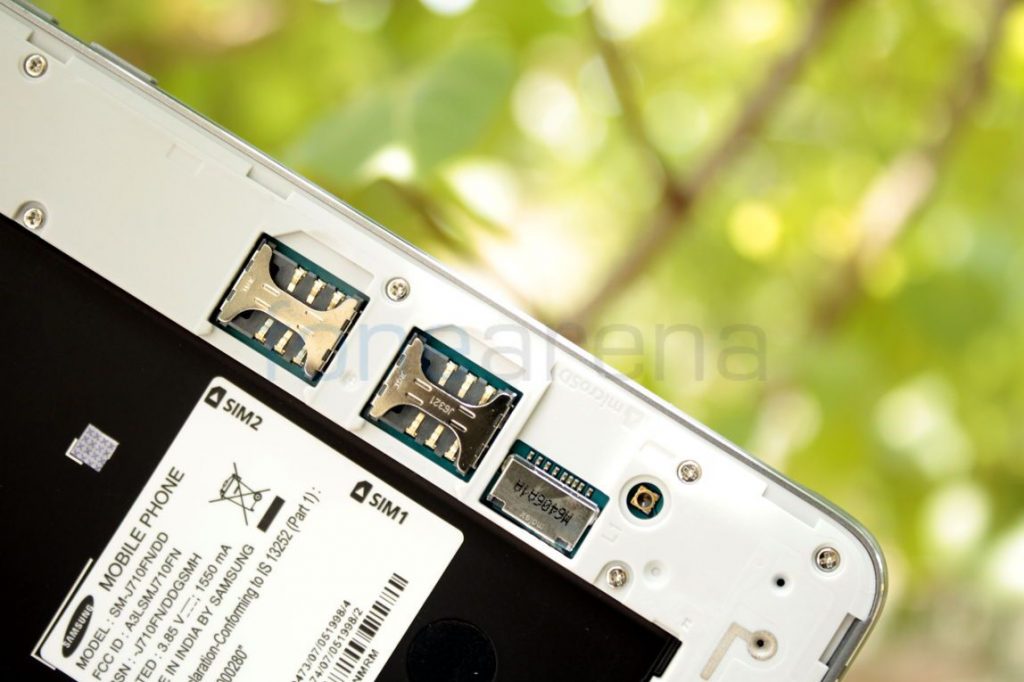
It also has dedicated dual micro SIM slots and a microSD card slot that accepts cards upto 128GB.
Camera

The new Galaxy J7 has the same 13-megapixel auto focus camera with f/1.9 aperture as seen in the last year’s J7 . The camera UI is simple with easy toggles. It has several modes (Auto, Pro (lets you adjust white balance, ISO and exposure manually), Panorama, Continuous shot, Beauty face, Sound & shot, Sports, HDR and Night), Effects ( Grey-scale, Sepia, Negative), and timer ( 2, 5 or 10 seconds). You can also press the home button twice to launch the camera, even when the screen is off and use the volume rockers as camera shutter.
Daylight shots are decent, but the exposure is not consistent most of the times, so images end up dull or over exposed. The first Galaxy J7 had the same issue. Macro shots are good offering nice bokeh effect, thanks to f/1.9 aperture but it is hard to focus most of the time. HDR shots are decent. Low-light shots have minimal noise. Images with flash are good since the flash offers an ample amount of light and is not over powering.
The 5-megapixel front-facing camera with f/1.9 aperture is just average. The LED flash is just a light remains on always and the screen lights up as well to make the images more brighter. Even though it might be useful in dark conditions, could be irritating at times.
Check out some camera samples (Click the image to view full resolution sample.)
Daylight
Macro
HDR

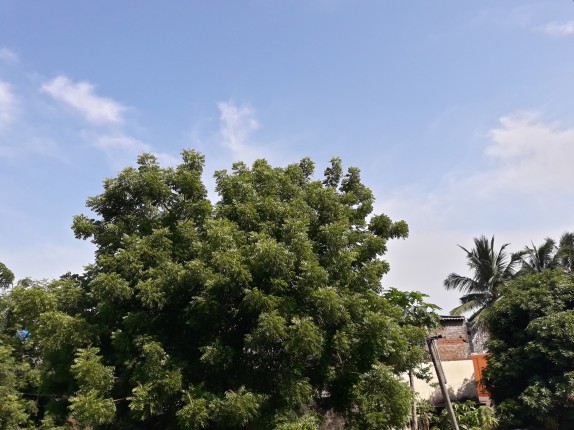
Low-light
Flash
Front camera
It can record videos at 1080p full HD resolution at 30 fps. Video is good offering vibrant colors and is sharp, but the audio is not crisp since it doesn’t have a secondary microphone. It doesn’t have slow motion recording. Check out the video sample below.
Software

Coming to the software, the phone runs on Android 6.0.1 (Marshmallow) with Samsung’s own UI on top and also includes Android security update for April. This is one of the few mid-range smartphones from Samsung to come with Android Marshmallow out of the box. But the company doesn’t promise on future Android updates.
Android 6.0 for the Galaxy Smartphones bring a neat and plain UI. You can launch the dialer and camera easily from the lock screen. The drop-down notification bar has several toggles and lets you customize the row accordingly. It also has brightness slider with a toggle for outdoor mode.
There is advanced features option that has one-handed operation mode to easily reduce the screen size by pressing the home key three times and there is also one-handed input in keyboard, lock screen for entering unlock pattern and in dialer. Smart alert makes the phone vibrate when you pick it up to notify you about missed calls and messages. Easy mute lets you mute incoming calls and alarms by turning the device over.
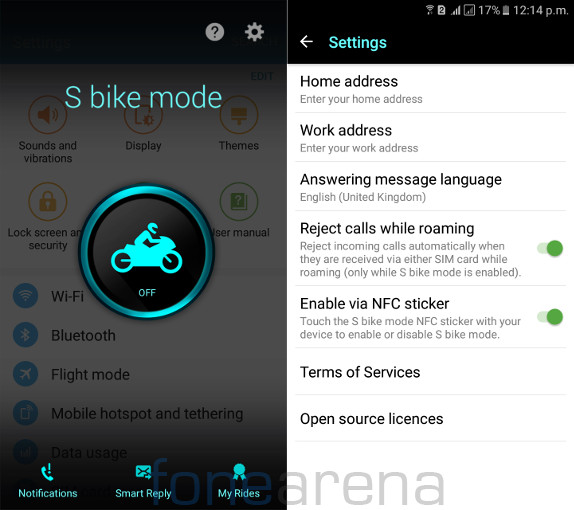
It also has the new S bike mode that was first introduced with the Galaxy J3 (2016)
This can be activated by using NFC tag or by pressing the S bike icon on the phone’s Quick toggle Panel. Once you activate the S bike mode, a pre-recorded message informs the caller that you are currently riding a bike. If the call is urgent, the caller can choose to press 1 to get through.
You can choose to take the call if it is urgent and the Motion Lock feature lets you take the call only after you have stopped your bike safely. It also shows the total travel time and also lets you earn bronze, silver and gold badges after you have traveled 50, 500 and 1000km, respectively.
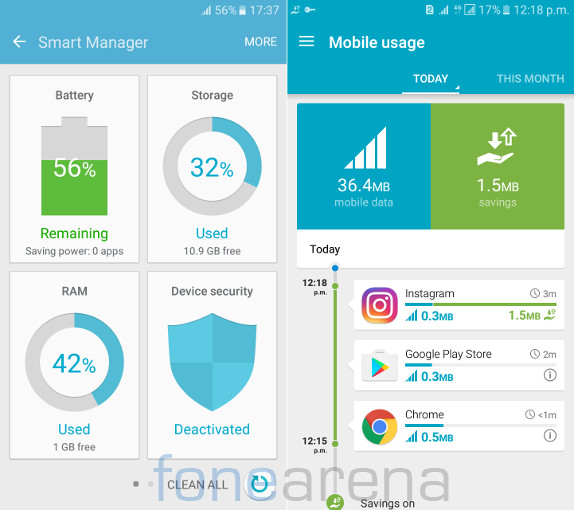
It has a Smart Manager app that lets you manage your device’s battery life, storage, RAM usage, and security all in one place. It also has the Ultra data saving mode powered by Opera Max. This compresses cellular data across all contents such as videos, photos, media, almost all apps and websites. You can also add app exceptions if you don’t want data from an app to be compressed. It offers timeline of app usage and how much data is saved in a day or month. You can also check out data savings by individual app as well.
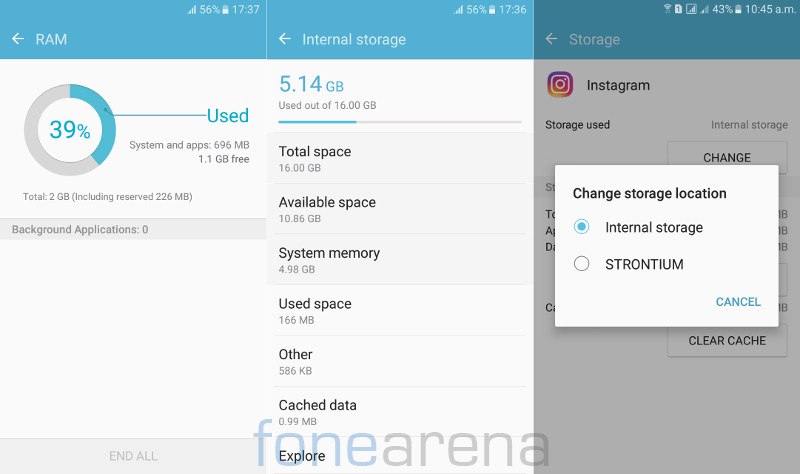
Out of 2GB of RAM, you get 1.82GB of usable RAM, out of which about 1.1GB of RAM is free when the default apps running in the background. Out of 16GB of internal storage, 10.8GB of storage is usable. You can also move compatible apps to the SD card when you insert one without formatting the SD card as the internal storage that is necessary in most phones.
Apps
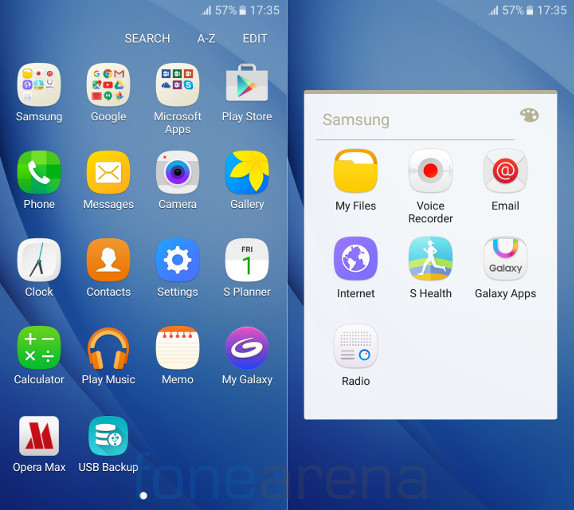
Apart from the usual set of utility apps and Google Apps, the smartphone comes with Microsoft apps – Word, Excel, PowerPoint, OneDrive, OneNote and Skype. It has S Health app and Galaxy Apps store, but you don’t get any pre-installed games.
Music Player and FM Radio
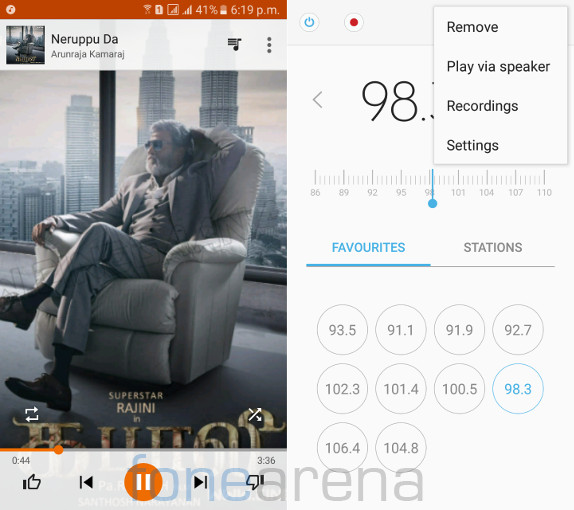
It doesn’t have a dedicated music player, so you have to rely on Google Play Music. It also doesn’t have equalizer, but it has SoundAlive+ and Tube Amp sound effects that can be enabled from the settings. This improves the audio when listening through earphones. That said, audio through the bundled earphones is decent, but the loudspeaker output is not loud even in full volume. The FM Radio has a new UI. It has auto scanning and recording, which lets you store the recorded files in phone memory or SD card.
Dual SIM and Connectivity
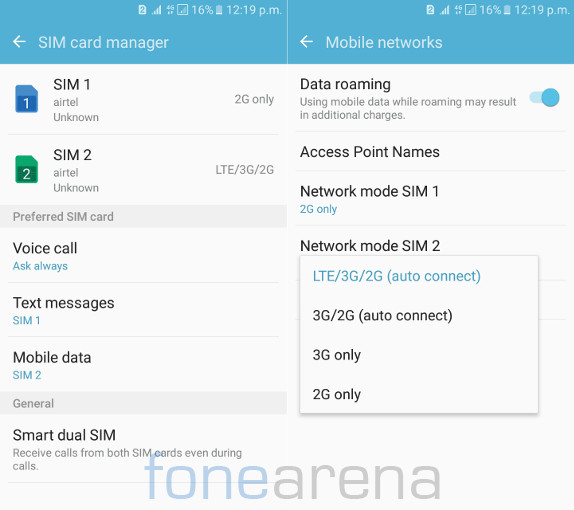
It has the usual set of connectivity features such as Wi-Fi 802.11 b/g/n, Bluetooth 4.1, GPS and also comes with NFC support. It has 4G connectivity with support for TD-LTE 2300MHz (Band 40) and FDD-LTE 1800MHz (Band 3) for India. Both the SIMs support 4G, but you can enable 4G only in one SIM at a time, while the other goes to 2G.
You can set preferred SIM for voice call, text and data from the SIM card manager. As usual it has Smart Dual SIM feature, similar to other latest Samsung Dual SIM smartphones. This automatically forwards calls from the phone number on SIM 2, even if a user is on the phone with SIM 1’s number. It also has USB on-the-go (OTG) support.
Performance and Benchmarks
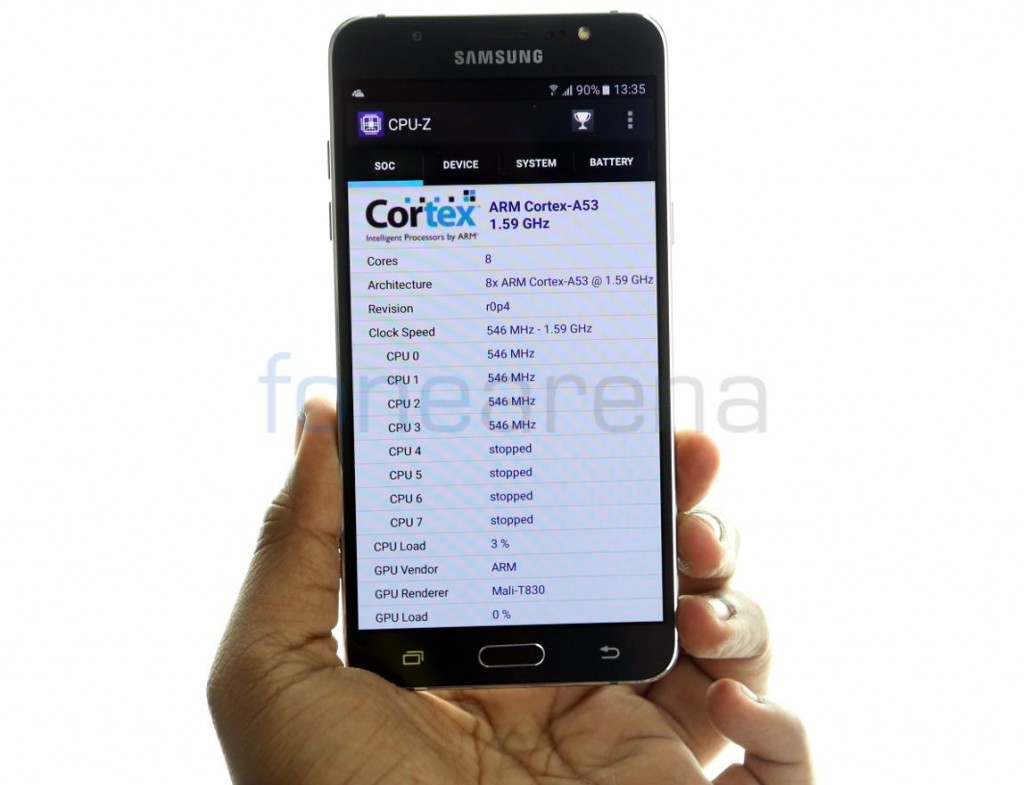
The Galaxy J7 (2016) is powered by an Octa-Core Exynos 7870 14nm 64-bit processor that has eight ARM Cortex A53 cores clocked at 1.59GHz per core. The performance is good without any lags. 2GB of RAM is enough to run several applications in the background. It has Mali-830 GPU which offers good gaming performance. We did not face any heating issues during 4G usage or gaming. Check out some synthetic benchmark scores below.
AnTuTu Benchmark 6

It scored 48846 points in the AnTuTu Benchmark 6.
Vellamo 3.1 MultiCore
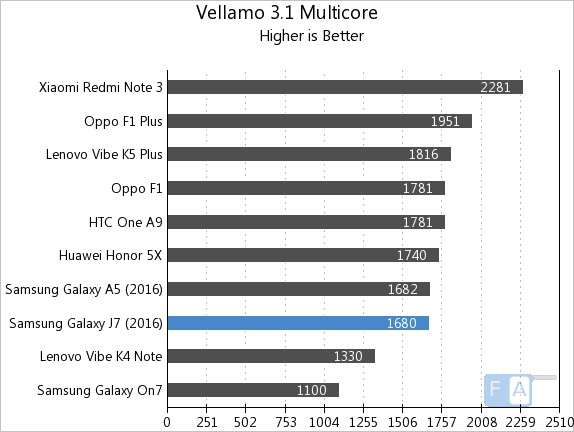
It managed to score 1680 points in the Vellamo 3.1 Multicore benchmark.
3DMark Ice Storm Unlimited
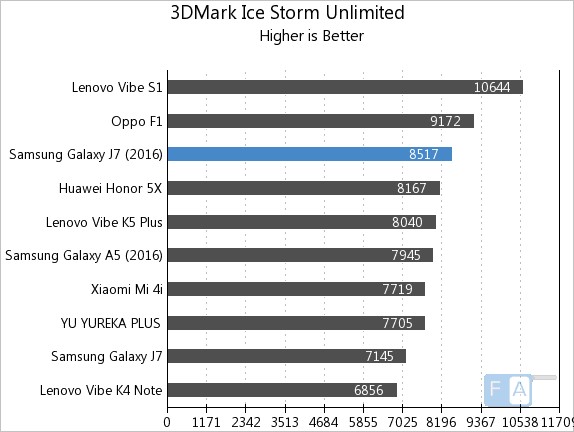
It scored 8517 points in the 3DMark Ice Storm Unlimited GPU benchmark.
Basemark OS II

It scored 1142 points and topped the Basemark OS II benchmark. Check out the complete set of Samsung Galaxy J7 (2016) benchmark scores.
Battery life
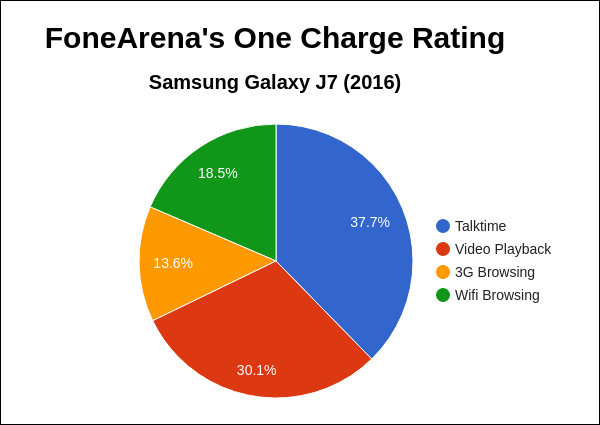
Coming to battery life, the 3300mAh battery lasts for the whole day from average to heavy use. With minimal use it will last for two days. The power saving mode and ultra power saving mode lets you extend the battery life. The smartphone also has a removable battery, so you can swap it easily when required.
In our battery test the smartphone achieved a One Charge Rating of 16 hours and 36 minutes, better than the first Galaxy J7 that scored a One Charge Rating of 15 hours and 1 minute. Check out the complete set of battery life test results here.
Conclusion
The Samsung Galaxy J7 (2016) is just an average smartphone for the price of Rs. 15,990. Even though Samsung has improved the performance and battery life compared to its predecessor, the phone has the same 720p display, while most phones in the price range feature a 1080p screen. The camera has also not been improved compared to the predecessor.
Samsung has missed out the ambient light sensor for auto brightness adjustment again and the phone also lacks gyroscope. Even though the is exclusive to Flipkart, it is not sold through flash sales, so you can get it easily. To summarize, here are the pros and cons of the smartphone.
Pros
- Brilliant battery life
- Good build quality
- Octa-Core Exynos 7870 14nm SoC offers good performance
- Android 6.0 (Marshmallow) is smooth
Cons
- Low resolution display
- No ambient light sensor, gyroscope and magnetometer
- Loudspeaker output is low
- Average cameras

